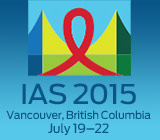 A program in San Francisco has succeeded in getting people on antiretroviral (ARV) treatment the day they are diagnosed with HIV and in shortening the time until they have an undetectable viral load, aidsmap reports. Researchers presented findings from the University of California, San Francisco, and San Francisco General Hospital RAPID demonstration project at the 8th International AIDS Society Conference on HIV Pathogenesis, Treatment and Prevention in Vancouver, British Columbia.
A program in San Francisco has succeeded in getting people on antiretroviral (ARV) treatment the day they are diagnosed with HIV and in shortening the time until they have an undetectable viral load, aidsmap reports. Researchers presented findings from the University of California, San Francisco, and San Francisco General Hospital RAPID demonstration project at the 8th International AIDS Society Conference on HIV Pathogenesis, Treatment and Prevention in Vancouver, British Columbia.
The project looked at the feasibility of providing all the services required to get someone on ARVs the same day as their HIV diagnosis. The analysis focused on 227 people newly diagnosed with the virus, 39 of whom went through the RAPID program between July 2013 and December 2014. Their outcomes were compared with 149 people who, between 2010 and 2013, experienced the typical system—also known as the standard of care—of integrating newly diagnosed individuals into HIV care, as well as 39 people who, between 2006 and 2009, followed protocols that based treatment initiation on CD4 count.
At the outset, RAPID was intended only for those who were infected within six months of diagnosis. Later, those with an opportunistic illness or CD4 count below 200, indicating they had been infected for a long time, were included as well. Seventy percent of the participants were recently infected.
Ninety percent of those in RAPID started ARVs on their first day in the program; 5 percent started the next day. There was an average one-day gap between an individual’s diagnosis and the first time they took ARVs. In the comparison groups, about 25 percent began treatment within a week of their first post-diagnosis appointment and 60 percent did so within a month.
RAPID participants attained an undetectable viral load in a median 56 days after diagnosis, while those in the standard-of-care group took 119 days, and those whose treatment was based on CD4 count took 283 days. After they had been on ARVs for three months and six months, a respective 75 percent and 95 percent of those in the same-day treatment group had full viral suppression, compared with a respective 38 percent and 70 percent of those in the other two groups.
To read the aidsmap article, click here.
Advertisement
Advertisement
Advertisement






Comments
Comments